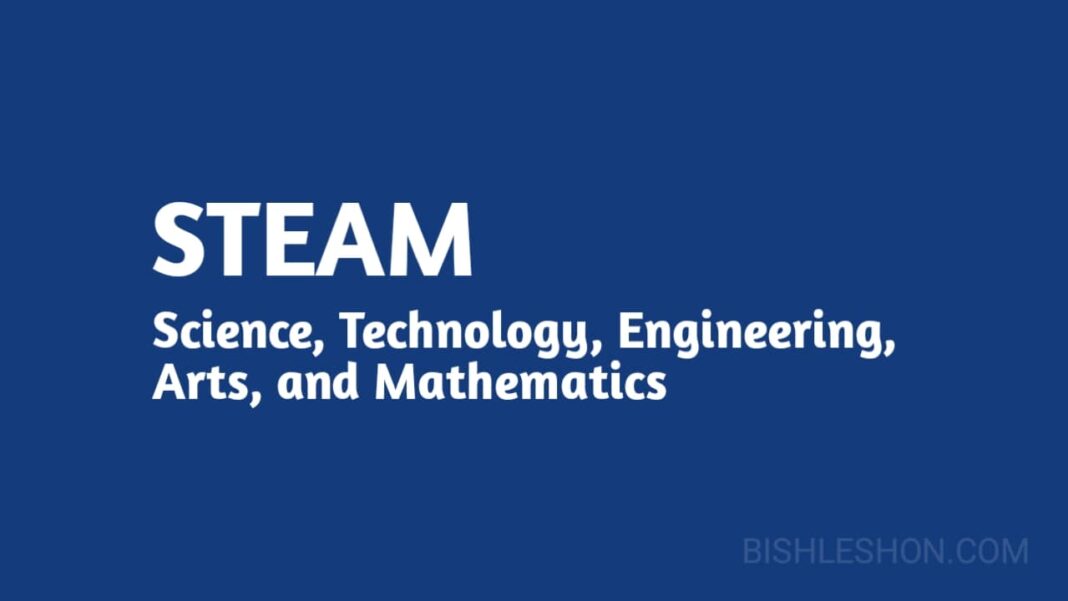In the modern world, the demand for creative, innovative, and technical professionals is rapidly increasing. STEAM is an acronym that stands for Science, Technology, Engineering, Arts, and Mathematics. It refers to an interdisciplinary approach to education that combines these five areas of study to promote creativity, critical thinking, problem-solving skills, and innovation. The STEAM fields – Science, Technology, Engineering, Arts, and Mathematics – offer a unique opportunity to meet these demands, providing students and professionals with an integrated and holistic approach to education and career paths. This article will delve into the importance and significance of STEAM fields, providing detailed definitions and examples of each discipline.
STEAM Fields
Science
Science encompasses the study of the natural world, including everything from physics and chemistry to biology and environmental science. It plays a crucial role in developing new technologies, solving complex problems, and advancing our understanding of the world around us. Scientific research has led to the development of life-saving drugs, medical devices, and treatments. It has also contributed to our understanding of climate change, biodiversity loss, and other environmental issues. Careers in science include research scientists, medical professionals, and environmental scientists, among others.
Technology
Technology refers to the application of scientific knowledge for practical purposes, including the design and creation of tools, machinery, and systems. It has revolutionized the way we live, work, and communicate, transforming various industries and creating new ones. Digital technology, including smartphones, computers, and the internet, has become ubiquitous in our daily lives. Technology has also enhanced our ability to access and analyze vast amounts of data, leading to new discoveries and innovations. Careers in technology include software developers, network architects, and cybersecurity professionals, among others.
Engineering
Engineering focuses on the design, development, and implementation of new technologies and systems. It is a critical aspect of STEAM fields, providing the skills and knowledge necessary for creating sustainable infrastructure, developing new energy sources, and improving transportation systems. Engineers are also responsible for designing and constructing buildings, bridges, and other structures that shape our environment. Careers in engineering include civil engineers, mechanical engineers, and electrical engineers, among others.
Arts
The arts play a vital role in STEAM fields, inspiring creativity and innovation. They provide a platform for exploring scientific and technical concepts, communicating complex ideas to a broader audience. For example, visualizations and animations can be used to explain scientific phenomena in a way that is easy to understand. The arts can also provide insight and perspective on social issues, cultural traditions, and human behavior. Careers in the arts include graphic designers, animators, and filmmakers, among others.
Mathematics
Mathematics is the language of STEAM fields, providing the tools necessary for understanding complex systems and solving problems. It is essential in everything from designing algorithms for artificial intelligence to predicting weather patterns. Mathematics also plays a critical role in the development of financial models and the management of risk. Careers in mathematics include statisticians, data analysts, and actuaries, among others.
In conclusion, the STEAM fields offer a comprehensive approach to education and career paths, providing students and professionals with the knowledge and skills necessary for meeting the demands of the modern world. By integrating science, technology, engineering, arts, and mathematics, we can create new technologies, solve complex problems, and transform industries. The significance of STEAM fields cannot be overstated, and it is crucial that we continue to invest in STEAM education and research to meet the challenges of the 21st century.
Bibliography
- National Science Foundation. (2020). Science and Engineering Indicators 2020. Retrieved from https://ncses.nsf.gov/pubs/nsb20201/
- National Science Foundation. (2018). STEM Education Data and Trends. Retrieved from https://www.nsf.gov



 For all latest articles, follow on Google News
For all latest articles, follow on Google News